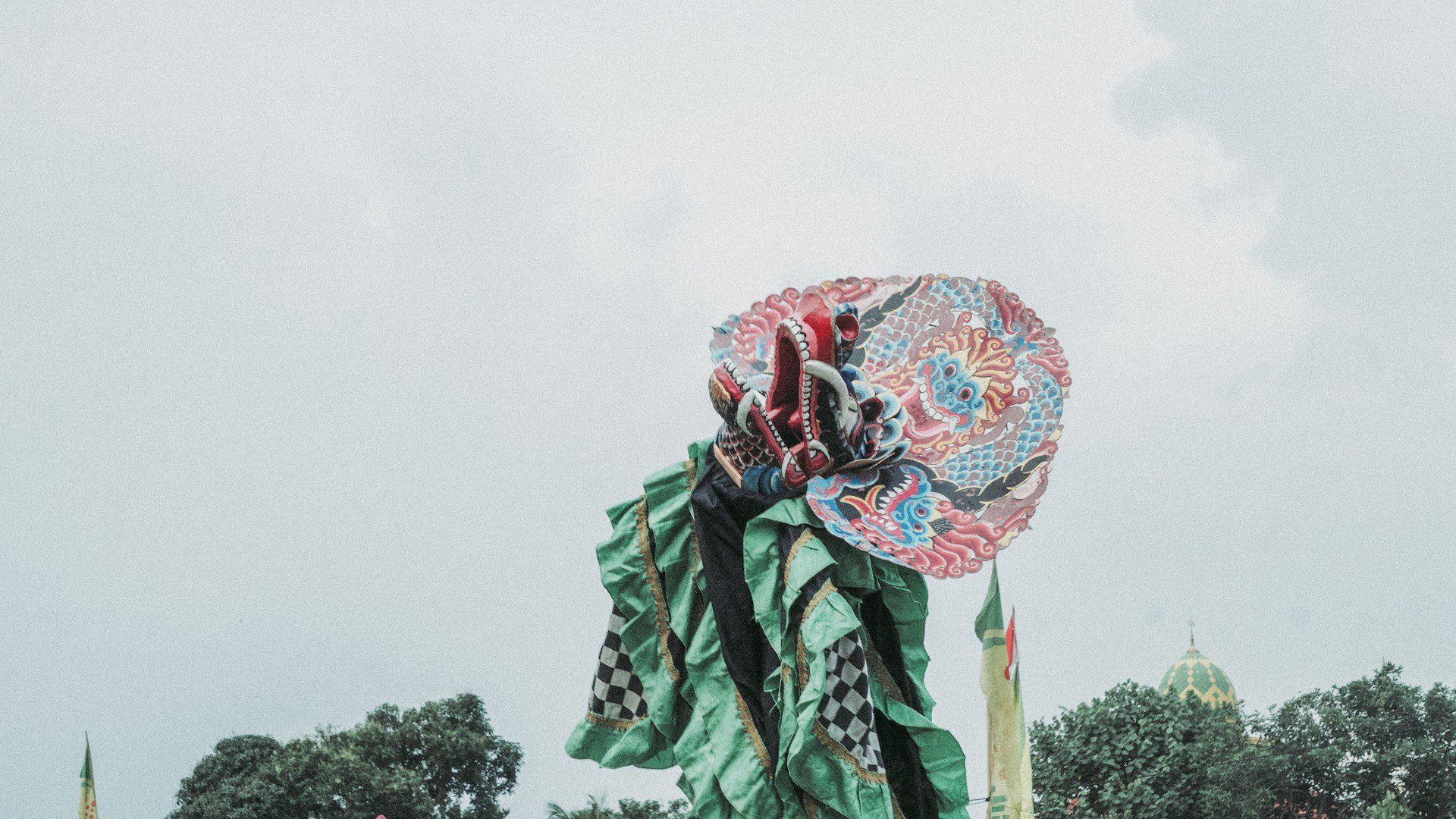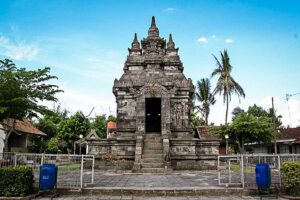Without talking about Jogja’s culture, a discussion about the city would be lacking. Rich in customs and traditions, this region is not only a wonderful tourist attraction but also a location steeped in diversity.
Jogja features a number of customary rituals that are very symbolic since the Sultanate of Ngayogyakarta Hadiningrat, an area of Indonesia, is governed by a monarchy. One unique feature that makes its people’s life better is the variety of ceremonies it practices.
What then are the customary rites in Jogja? The list of ceremonies and their objectives are explained here.
1. Tingalan Jumenengan Dalem
The Tingalan Jumenengan Dalem is a sequence of rituals performed in conjunction with the throne ascension or coronation of the Sultan.
The Sugengan ceremony, which is organized to pray for the Sultan’s long life, the glory of his reign, and the wellbeing of the Yogyakarta people, is the main attraction of this commemorative event.
Following the Sugengan, a ceremony known as the labuhan is performed at a number of holy locations that are significant to the Yogyakarta Palace.
In addition to offering prayers for protection, the labuhan ceremony—whether held by the sea or on mountains—fulfills the Sultan’s obligation to preserve natural harmony, or “Hamemayu Hayuning Bawono.”
2. Hajad Dalem Labuhan
The word “labuhan” is derived from the verb “labuh,” which meaning to toss, set down, or drift away. This ritual serves as a prayer and an attempt to get rid of all negative traits.
During the labuhan ceremony, specific items known as “ubarampe labuhan” are actually cast by the Yogyakarta Palace.
These ubarampe labuhan are thrown at designated locations known as sacred sites, some of which include artifacts owned by the current Sultan.
Under the reign of Sri Sultan Hamengku Buwono IX, the Labuhan Dalem ritual was celebrated to celebrate the Sultan’s birthday (Wiyosan Dalem) according to the Javanese calendar, rather than to honor the coronation day (Jumenengan Dalem).
The Labuhan Dalem ceremony was brought back to honor Jumenengan Dalem under the reign of Sri Sultan Hamengku Bawono X.
The Labuhan ritual is celebrated annually on the 30th of Rejeb, one day after the Jumenengan Dalem event peaks on 29 Rejeb.
Read more: Yogyakarta Night Tourism Destination: From Traditional Performances to Photo Spots
3. Garebeg Ceremony
One of the major events held in the Yogyakarta Palace that is open to the public to see and take part in is Garebeg.
The palace hosts three Garebeg celebrations in a Javanese year: Garebeg Mulud on Prophet Muhammad’s birthday, on the 12th of Mulud; Garebeg Sawal on the 1st of Sawal (Eid al-Fitr); and Garebeg Besar on the 10th of Besar (Eid al-Adha).
The palace releases gunungan during these three Garebeg ceremonies as a representation of the Sultan’s altruism toward the populace. The attending community is then given the gunungan.
The Yogyakarta Sultanate was a kingdom with its own political structure prior to joining the Republic of Indonesia. Garebeg played a crucial role in that system of government.
Regents and officials from every region of the Yogyakarta Sultanate, including the outer regions and the core area (the kingdom’s central territory), travel to the capital during Garebeg to honor the Sultan and present tribute.
Accommodations for officials from different regions are offered by the Yogyakarta Palace at Bangsal Pekapalan. It is a row of pendapa-shaped buildings that encircles the North Square. The number of Kakung Gunungan distributed matches the number of participating regions.
The Yogyakarta Sultanate obeyed and adjusted to the new laws and governance structure following its integration with the Republic of Indonesia.
The system of tribute paid at every Garebeg was eliminated. Garebeg, though, was kept on. Gunungan is still released from the palace as a representation of the king’s altruism. However, Garebeg’s importance faded owing to several political and economic issues.
3. Numplak Wajik
A ritual known as Numplak Wajik initiates the process of setting up gunungan, a representation of the king’s almsgiving to the populace. These gunungan would later be distributed to the populace and paraded during the Garebeg event.
Three times a year, the Yogyakarta Palace hosts the Garebeg ceremony: Garebeg Mulud honors the Prophet Muhammad’s birth, Garebeg Sawal signifies the conclusion of the fasting month, and Garebeg Besar honors the Eid al-Adha holiday.
The Yogyakarta Palace also organizes the Numplak Wajik ceremony three times a year since gunungan is always issued by the palace for distribution during each Garebeg.
4. Bethak Ceremony and Pisowanan Garebeg Mulud Dal
Pisowanan and Bethak. The two rites of Garebeg Mulud Dal are interrelated. Only once every eight years, specifically in the year Dal, are both held.
In the Javanese calendar system, a year is called dala in the eight-year cycle (windu). Bethak, which means “cooking rice,” is Javanese.
Pisowanan, which comes from the word sowan, which meaning “audience,” refers to a gathering with the king.
The Islamic Mataram agrarian culture is intrinsically linked to the palace event symbolized by the rice-cooking parade. Cooking rice is a sign of abundance and health.
After cooking, the rice is formed into a circle. This is an example of the idea of “golong gilig,” which stands for the shared determination to work toward the prosperity and well-being of the community.
The rice that the Sultan gave to the family members and palace staff, referred to as “sega golong” or molded rice, represents the equitable distribution of wealth and the hope that the palace staff will be able to carry out their responsibilities and service with unwavering determination for the prosperity and well-being of the community.
Read more: Immersing in Javanese Traditions: Exploration Culture in Yogyakarta
5. Rendhem Ari-ari and Brokohan
Within the Yogyakarta Palace, the customs of “mendhem ari-ari” and “brokohan” are performed shortly after a birth. The day of the birth is often when these two customs are observed.
They might, however, be done the next day if unfavorable conditions exist, such as the baby being born too late at night.
- Rendhem Ari-ari
The placenta, also known as ari-ari in Javanese, is a vital organ that provides nourishment and protection to the developing child inside the mother.
The placenta is still regarded as unique by Javanese society even after childbirth. They feel compelled to nurture and take good care of the placenta, even if it is only used once, and they accomplish this by holding a burial ceremony known as “mendhem ari-ari.”
The father of the child is in charge of leading the mendhem ari-ari procession. He has to dress nicely in traditional clothing for the parade, including a “blangkon gagrak” in the Yogyakarta style and a headband made of “nyamping” cloth.
The blood-free, cleaned placenta is put in a little clay pot known as a “kendil.”
In addition to the placenta, other items found inside include cotton cloth, salt, needles, thread, paper with letters written in Javanese, Latin, and Arabic, and jasmine flowers.
In an alternative form, additional ingredients include taro leaves, rice, ember pethek (a species of grass), fragrance oil, turmeric, candlenut, coins, and boreh flowers.
The several objects buried with the placenta represent and offer hope for the child’s future capacity to meet their basic needs.
- Brokohan Ceremony
A child’s birth is celebrated and announced with the brokohan ceremony, which happens on the same day as the mendhem ari-ari parade.
The Arabic word “barokah,” which means benediction, is where the word “brokohan” itself comes from. Therefore, brokohan signifies more than just the advent of a new family member; it also conveys thankfulness for the newcomer’s arrival and the hope that the child will always be blessed.
6. Mitoni Ceremony
The word “pitu,” which means seven in Javanese, is the root of the Mitoni ceremonial, also called tingkeban. When the fetus is seven months gestation, prospective mothers observe this custom throughout their first pregnancy.
According to the Javanese calendar, Mitoni is usually conducted on Wednesdays or Saturdays on odd dates, just before the full moon. On Tuesdays or Saturdays, however, the Yogyakarta Palace hosts the Mitoni ceremony.
Certain cultures simplify the Mitoni rite, while others rigorously follow customs.
For the Royal Princesses—the daughters of the Sultan and Queen—the Mitoni custom is upheld within the palace under strict guidelines. This is how Mitoni processions were traditionally organized under Sri Sultan Hamengku Bawono X.
The Mitoni ritual begins with Abdi Dalem, which denotes the Sultan and Queen’s (Garwa Dalem) arrival in the ceremonial hall.
The location was the Yogyakarta Palace’s Ndalem Kilen pendopo, which was chosen under the reign of Sri Sultan Hamengku Bawono X. The Abdi Dalem Kanca Kaji then offers a prayer after this. The Royal Princess and the Royal Son-in-law then perform the Ngabekten, a polite homage to the Sultan, Queen, and Royal In-laws.
Read more: The Lineage of the Yogyakarta Palace, From the Beginning to the Present
7. Supitan, Ceremony of Passage to Adulthood for Males
Embark on an unforgettable journey to Java, Indonesia, where a world of wonders awaits! Java, the heart and soul of Indonesia, is a treasure trove of diverse landscapes, rich cultural heritage, and breathtaking experiences.
Find out the package now from Yogyakarta Tours:
- 1 Day Tour:
- Multidays Tours





